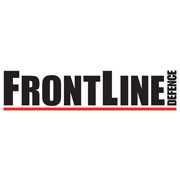Procurement Interrupted
With new Canadian fighter aircraft still many years away, and the current fleet nearing its end-of-life, I’m guessing that, from a political perspective, some ‘appearance of effort’ was deemed necessary.
Instead of ‘getting on’ with a competition, however, the government created a policy that required the Royal Canadian Air Force (RCAF) to be able to meet defence commitments to NATO and NORAD concurrently. With only 76 CF-18s remaining in the fleet, this introduced a capability gap that would have to be filled with “interim” aircraft (first new Super Hornets from Boeing, then used legacy Hornets from Australia).
It’s doubtful that political decision-makers understood (or even cared about) the implications of existing shortfalls, or how adding new pilot- and technician-training, new supply chains and new operational procedures for the new Super Hornets, would create a serious imbalance in the capability continuum. But there are also complications from adding more used aircraft as an “interim” solution in the midst of a pilot shortage.
Having politicians making decisions that impact military capability without understanding the myriad cascading implications, has to stop. Manipulating military procurements for short-term political gain instead of making long-term decisions based on the defence of Canada, also has to stop.
Last month, the Auditor General of Canada issued a report saying the government’s plan to augment the fighter aircraft fleet with 18 used F/A-18s from Australia is seriously flawed. It noted that increasing the number of fighter jets would still not allow the RCAF to meet the new operational requirement of having enough fighters available to meet our commitments to NATO and NORAD simultaneously (a requirement that many felt was “manufactured” to create a non-existent “capability gap” and to justify a sole-source contract).
The OAG reports that the proposed interim solution will not work, yet the government is pressing ahead without addressing those concerns. Why? This current situation brings to mind the Auditor’s 2016 report on operating and maintenance support for military fleets. That audit identified poor planning assumptions that led to higher costs and reduced equipment availability. Flawed planning assumptions remain, thanks to help from politicians.
Throughout its entire first mandate, the Trudeau Liberals have managed to avoid any decision on the fighter-replacement requirement, and the distraction of an interim aircraft played a key part in the delay tactics. An RFP to buy 88 new fighter jets is expected in 2019, but the October 21st election will no doubt interrupt the process.
With the new defence policy, Strong Secure Engaged, promising much needed acquisitions throughout the Canadian Armed Forces, we sure hope that somebody looks up the true meaning of “open and transparent” (hint: it does not mean “control the message”), so they can start to get procurement right.
– Chris MacLean, Editor-in-Chief

